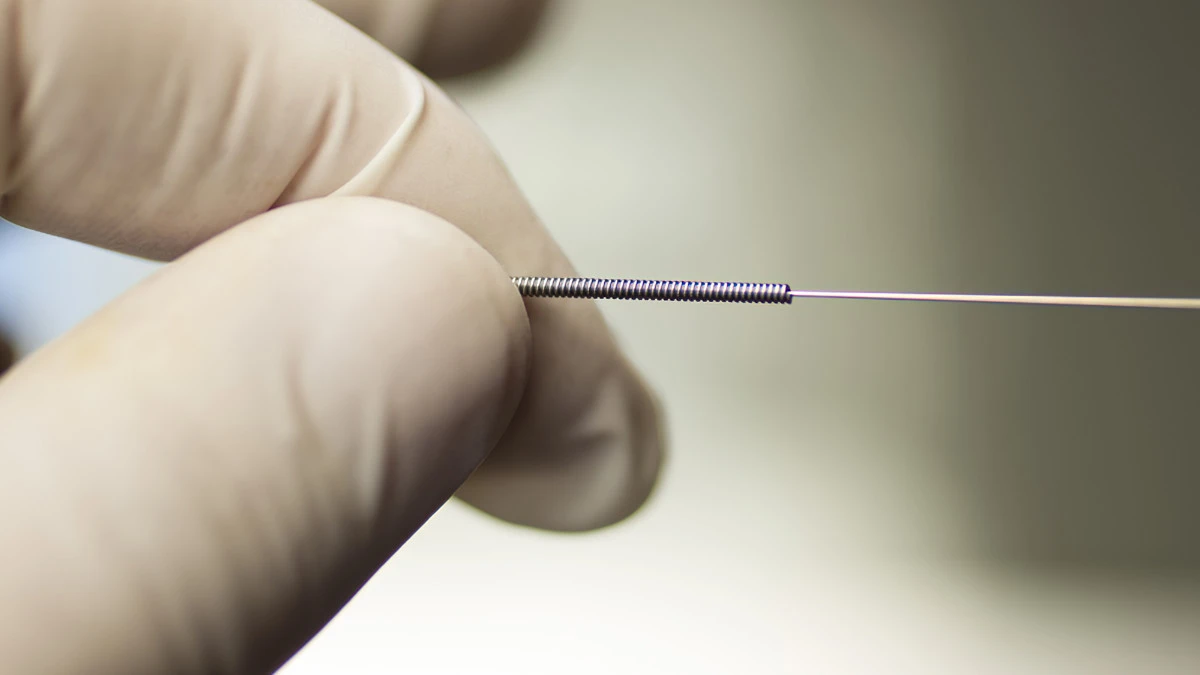Physical Therapy & Sports Rehab
Functional Dry Needling

What is Functional Dry Needling?
Dry Needling (DN) is defined by the American Physical Therapy Association (APTA) as follows: A skilled intervention performed by a physical therapist that uses a thin filiform needle to penetrate the skin and stimulate underlying myofascial trigger points, muscular and connective tissues for the management of neuromusculoskeletal pain and movement impairments (APTA, 2012)
Functional Dry Needling (FDN) is the application of dry needling for the purpose of restoring functional movement. It is utilized as a tool pre/post assessment to correct dysfunctional movement patterns that lead to pain, reduced performance or disability. A solid fine filament needle is used to address myofascial trigger points, adhesions and/or scar tissue that cause pain, altered coordination, weakness or restricted mobility.
Also known as Intramuscular Stimulation (IMS), dry needling is a unique therapy often teamed with traditional modalities like electrical stimulation and customized corrective exercises. The use of e-stim with FDN (FDN-ES) can enhance the benefits of FDN with precise delivery through a “needle-electrode” to influence or modify nervous system activity in an effort to improve or modify a specific physiologic function in the body. By targeting muscle dysfunction and reducing muscle tension, it significantly speeds up recovery times. Often, patients will see an immediate improvement in range of motion with FDN or FDN-ES
Results of FDN/FDN-ES Muscle Function Reset
- Pain relief for sports injuries, general muscle pain, and even fibromyalgia
- Improved flexibility and increased range of motion
- Recovery post athletic competition
- Enhanced sports performance
- Increased movement and activity level
People experiencing pain, movement dysfunction, traumatic injuries, repetitive pain-related injuries and performance deficits can find results and solutions through functional dry needling. The benefits of this technique include pain relief, myofascial mobility, toxin removal, increased blood flow or tissue oxygenation, and normalization of neuromuscular activation patterns (motor control) needed for healthy, optimal movement.
Our clinicians use this technique to influence mechanics to treat the root cause of a movement problem. FDN has biomechanical, neuromuscular and biochemical influences on the tissues. Biomechanically, the needle meshes apart and “unwinds” the bound fibers of a myofascial trigger point, as well as breaks up scar tissue adhesions. Neuromuscularly, when the needle reaches a trigger point it will elicit a “local twitch response” that causes a neurological reset, normalizing tone and improving activation. Biochemically, it causes a rush of blood flow and oxygen to the tissue, as well as the release of inflammatory mediators/toxins that accumulated in the area from restricted blood flow/oxygen.
Benefits of FDN/FDN-ES:
- Reduces risk of cutaneous tissue injury
- Improves nerve function
- Improves muscle function
- Improves connective tissue function
- Improves CNS processing
- Pain inhibition
- Inflammatory modulation
- Reduces muscle wasting and atrophy
- Increases muscle blood flow
- Improves motor unit recruitment
- Increases muscle volume
- Increases maximal isometric and dynamic strength
- Increases motor performance
- Reduces fat deposits in muscle from chronic spasm/atrophy
- Improves overall nerve and muscle function
- Tendon and ligament regeneration